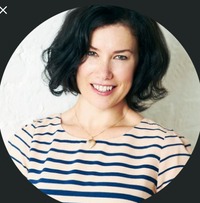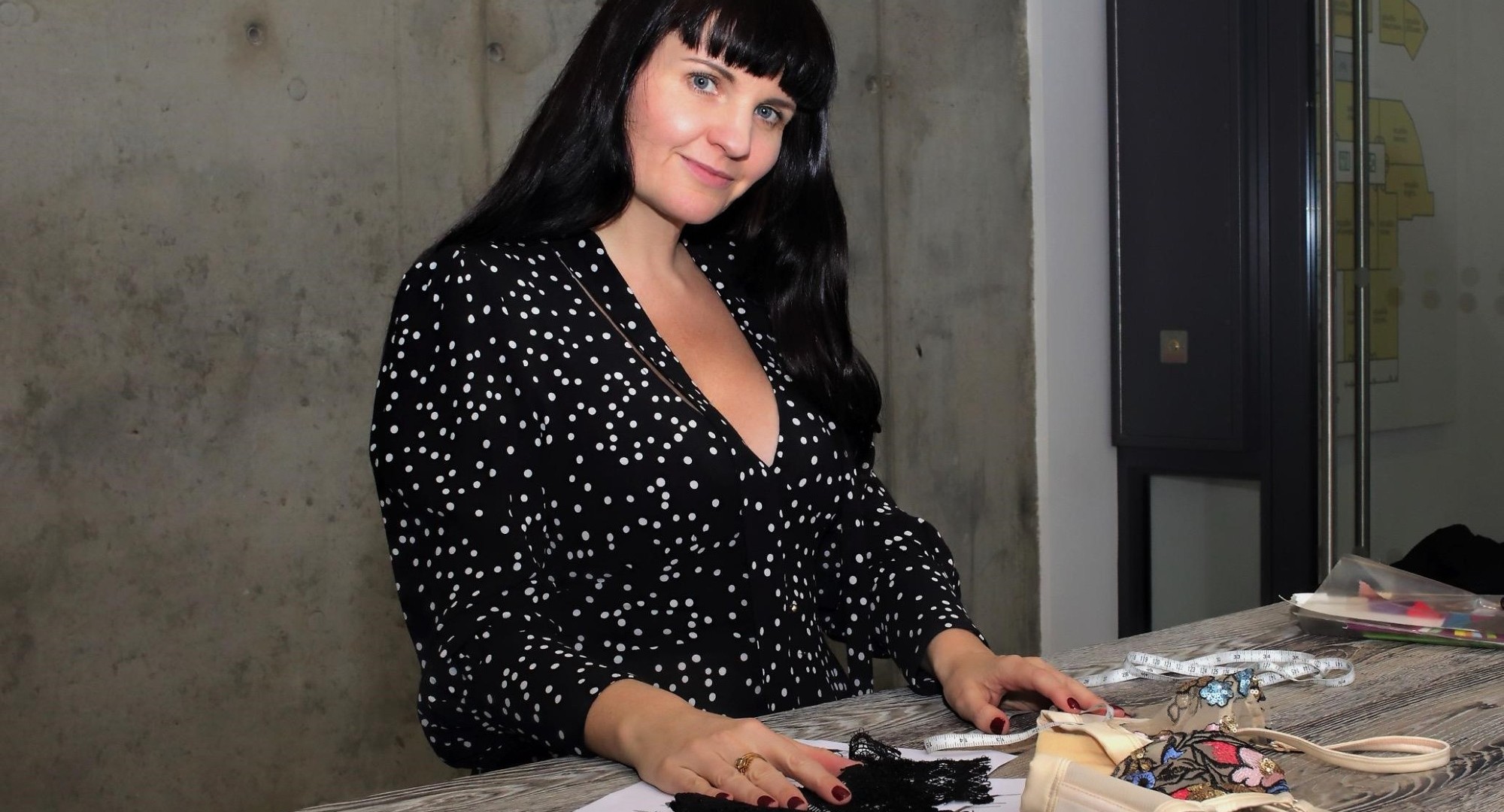'Why lingerie is still a feminist issue'
For far too long, lingerie was designed and marketed through the male gaze. Emma Parker, a lawyer turned founder of Playful Promises, tells us why feminism and diversity is at the heart of her mission to represent everyone


For far too long, lingerie was designed and marketed through the male gaze. Emma Parker, a lawyer turned founder of Playful Promises, tells us why feminism and diversity is at the heart of her mission to represent everyone
It's true, lingerie is still a feminist issue and here's why. I have loved lingerie ever since the age of 18, when I bought my first expensive pair of knickers; a lacy thong with a fluttery fluted frill around the waist, from French company Folies de Renaud. I also love the concept of the rule of law (broadly this means equality before the laws, that the laws must be publicly promulgated, independently adjudicated with a fundamental level of human rights). This passion meant I studied to become a lawyer, but when it came down to it, whilst I love talking and thinking about philosophy, I like designing and dressing up in fancy pants more.
Spotting the diversity gap
During this time, I could also see a glaring gap in the market for a design-led lingerie brand catering to a wide variety of bodies. Over the years, Playful Promises has built up a group of brands making fancy bras in over 85 bra sizes, with a variety of price points. It's vital that diversity is about representation and availability of sizes, but also a range of prices making them accessible.
I also consider myself a feminist. The meaning of feminism is often twisted to support and denounce other ideas but really, all it means is that you believe in women’s choices. Women have the right to make their own choices about their bodies and their lives, and to be respected and treated accordingly.

For me feminism means it’s OK to make the choice to be a sex worker. It means we all understand the difference between sex trafficking and women who make a decision to work in the adult industry. And it means respecting the agency of those who make that decision. It doesn’t mean you personally have to be comfortable with the sex industry, but that you respect the right of other women to make that choice.
Let's take another example from the other end of the spectrum, feminism also means it is fine to make a choice to wear a burka. While I may have personal feelings about religion – it’s irrelevant, as feminism is about respecting the right of women to live as they chose, according to their own beliefs, (that can be very different to my own), and that I can still support wholeheartedly.
From this you can see quite clearly how, in a world where women have agency and choices, that how and when you feel sexy is an entirely personal choice. Feeling sexy in lingerie is perfectly compatible with being a feminist. Never forget, lingerie is a feminist issue.
Celebrity news, beauty, fashion advice, and fascinating features, delivered straight to your inbox!
As the CEO of Playful Promises, I really love my job. People often deride social media, but it's brilliant reading comments from people from all walks of life, with all sorts of body types wearing our lingerie and expressing how much they love seeing others like them represented.
Lingerie is still a feminist issue - Emma's five empowering tips
1. Your 'true' bra size is marketing nonsense
The idea that you have one bra size that's your perfect fit is marketing nonsense. Don’t let companies invalidate your agency by telling you that you don’t know what bra size fits you best. Honestly, just put a bra on and decide if it feels comfortable, we all have different ideas of comfort.
2. This 'sister sizing' secret will change everything
This is a size where the cup volume stays the same despite the band and cup number changing. This is why if, for example, your 'usual' bra size of 34C is out of stock, you could try a 32D or 36B as the cup is made from the same size pattern pieces and uses the same size bra wires – it is just the band which is a different length. As the bra will have three rows of hooks and eyes on the end of the band, it can often work on the tightest if you size up or on the loosest or with a bra extender if you size down.
3. Let's take this secret further
Now we’ve discussed the volumetrics of bra cups -30FF, 30F, 32E, 34DD, 36D, 38C, 40B are all the same size cup. They all go on the same production line and use the same pattern pieces and wires. Obviously, the bands are the big difference here, but what it means is depending on how tight or lose you like your band will determine which bra size you should wear.
Say you technically measure a perfect 30F, but you like your bras really snug, then a 30FF would be a better size for you. If you like your bras not so tight, maybe go for a 32E. This means you could sister size if your size is out of stock and depending on how tight you do or don’t like your bra would depend on where you fastened it. There is approx. 4-5cm difference on each band size, and a hook and eyes give you approx. 4cm adjustment. Again, the idea of there only being one true bra size for you is complete nonsense.
4. Wearing a bra or not
As far as I'm concerned there's no medical evidence to support that wearing a bra is good for you or bad for you. Wear a bra if you want to and don’t wear one if you don’t want.
5. Be kind to your body
And finally, love and compliment your body as you would advise a dear friend to do to theirs.
* Emma Parker is CEO of leading British lingerie brand Playful Promises. The brand mixes quirky, directional design with all things playful, flirty and even a little bit dirty. Their new Hustler X Playful Promises collection is available online now.
Maria Coole is a contributing editor on Marie Claire.
Hello Marie Claire readers – you have reached your daily destination. I really hope you’re enjoying our reads and I'm very interested to know what you shared, liked and didn’t like (gah, it happens) by emailing me at: maria.coole@freelance.ti-media.com
But if you fancy finding out who you’re venting to then let me tell you I’m the one on the team that remembers the Spice Girls the first time round. I confidently predicted they’d be a one-hit wonder in the pages of Bliss magazine where I was deputy editor through the second half of the 90s. Having soundly killed any career ambitions in music journalism I’ve managed to keep myself in glow-boosting moisturisers and theatre tickets with a centuries-spanning career in journalism.
Yes, predating t’internet, when 'I’ll fax you' was grunted down a phone with a cord attached to it; when Glastonbury was still accessible by casually going under or over a flimsy fence; when gatecrashing a Foo Fighters aftershow party was easy-peasy-lemon-squeezy and tapping Dave Grohl on the shoulder was... oh sorry I like to ramble.
Originally born and bred in that there Welsh seaside town kindly given a new lease of life by Gavin & Stacey, I started out as a junior writer for the Girl Guides and eventually earned enough Brownie points to move on and have a blast as deputy editor of Bliss, New Woman and editor of People newspaper magazine. I was on the launch team of Look in 2007 - where I stuck around as deputy editor and acting editor for almost ten years - shaping a magazine and website at the forefront of body positivity, mental wellbeing and empowering features. More recently, I’ve been Closer executive editor, assistant editor at the Financial Times’s How To Spend It (yes thanks, no probs with that life skill) and now I’m making my inner fangirl’s dream come true by working on this agenda-setting brand, the one that inspired me to become a journalist when Marie Claire launched back in 1988.
I’m a theatre addict, lover of Marvel franchises, most hard cheeses, all types of trees, half-price Itsu, cats, Dr Who, cherry tomatoes, Curly-Wurly, cats, blueberries, cats, boiled eggs, cats, maxi dresses, cats, Adidas shelltops, cats and their kittens. I’ve never knowingly operated any household white goods and once served Ripples as a main course. And finally, always remember what the late great Nora Ephron said, ‘Everything is copy.’
